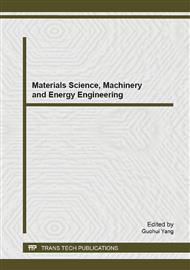p.169
p.174
p.178
p.182
p.187
p.192
p.198
p.202
p.207
Mixed-Mode I/III Fracture Characterization of Aluminum Alloy
Abstract:
Aluminum alloy 5083 is taken for the study of fracture parameters in mixed-mode I/III. Three point bend specimens with load inclination and notch inclination are fabricated and precracked. They are tested with various inclination angles and for two different thicknesses. The results are analyzed and found that the fracture toughness decreases for larger inclination angles. Also, it is found that the thinner specimens are found to be tougher than the thicker specimens. Material and methods Symmetrical three-point bend cracked specimens have been used extensively in fracture mechanics to study mode I fracture properties because they are one of the standard types of specimens used in the ASTM codes for determining the fracture toughness JIc.. In the mixed-mode I/III fracture, there is only a limited amount of experimental work done so far. The observations on combined mode I - mode III fracture have been very scarce and there is no general agreement among researchers on the effect of the addition of a mode III component to pure mode I loading. Limited study (Avci et al 2005 [, Kamat and Hirth 1996 [) has been done on bend specimens subjected to mixed-mode I/III when compared to the mode I case, i.e., a center-loaded specimen.
Info:
Periodical:
Pages:
187-191
Citation:
Online since:
December 2013
Authors:
Price:
Сopyright:
© 2014 Trans Tech Publications Ltd. All Rights Reserved
Share:
Citation:


